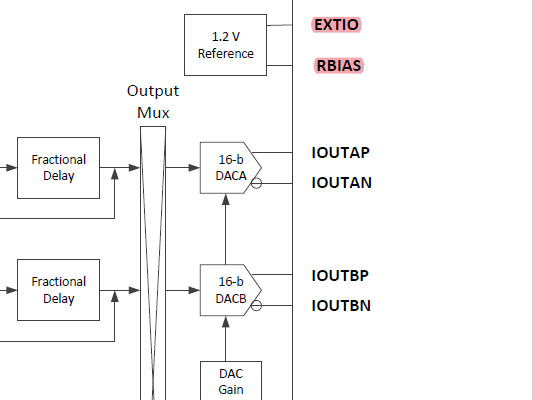Hi,
I am currently doing a test on DAC38j84EVM with CW tone (no data input) and defining the link budget analyse @2.4576 GSPS.
So with 2 transformers on EVM board (impedance ratio: first one 2:1 and second one 1/1), with settings for coarse gain=15, NCO actived and mixer gain=0dB, const value=0x0000, offset bninary, internal reference, I got on spectrum analyser (50Ohm) about 0dBm to -2dBm for f<300MHz and -3dBm to -4dBm for [400MHz, 1GHz].
I see the Rbias=1.91kOhm on schematic of the EVM board, I chose the internal reference which should be 0.9V, so theoretically the Iout ma will be (0.9V/1.91kOhm)*64=30mA. With this current and with 50Ohm shunt resistor at output of DAC on the EVM board I may have 1.5Vp-p at the first transformer input and 1.06Vp-p on the 50Ohm output which leads to about 4.5dBm.
I don't know why there is so much loss (cascaded transformers IL should be within 2dB according to datasheet). Could you explain this pls ?
Another two small questions:
1. The first transformer JTX-2-10TA+ from Minicircuit is for 75Ohm system and I would like to know why use this 75Ohm transformer instead of a 50Ohm transformer ?
2. On the block diagram of the DAC38j84 datasheet the reference is 1,2V instead of 0,9V, why ?


Thanks in advances for your help,
Best regards,
Xin



